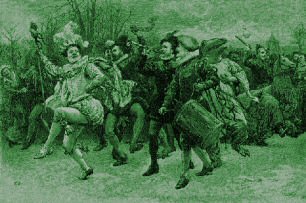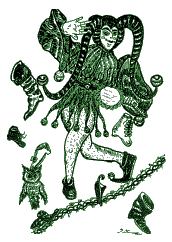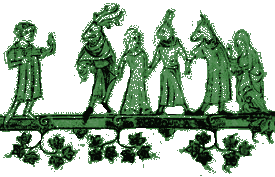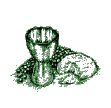Merry Misrule

Merry Misrule
A Celebration of Chaos & Revelry
No matter what particular path you follow, you can easily see that the time period between December 24th and January 6th is a most liminal time, a time between times, a time when we are all at a threshold, one of change and of disruption, rebirth and renewal. While nature appears to have gone to sleep by showing us bare trees and pelting the earth with snow and ice, there is still a great and roiling activity found internally as doorways are opened, and places where the veils of protection between our world and the next have thinned. And at those spots the serpent power in the land has erupted in preparedness and readiness, for the crossing over of ancestors and those who dwell in the land of the dead.
Daylight hours are seen to host great festivities filled with much joy and laughter and good-heartedness, as seen by actions and events as the Twelve Days of Christmas unfolds progressively. But after twilight, when it has gotten dark, there is another face to this festival — a darker face, and one that we shall explore as we slip through the cracks in this upcoming essay in the Twelve Nights of Misrule. This particular time, this seasonal midwinter celebration was known by many names by many cultures, names such as Martinmas, Saint Nicholas’ Day, Thanksgiving, Yule, Solstice, Christmas and New Year’s. The underlying themes to these holidays have similar foundational themes that can be recognized in their individual displays and actions. The slight time variances were due to the seasonal differences of different latitudes of certain locales but these celebrations were all part of this same universal motif of a return to what Mircea Eliade termed being in illo tempore.
While feasting and celebratory events including the exchange of gifts happen during this time, there is also a underlying current of awe and a fearful majesty when one reflects back on the trials and tribulations undergone. This is a time when we reflect back on the previous seasons as the prior year unfolded before us, and we are thankful for having made it through those times. We also desire to weather the current cold season, the season of rest and renewal when the Winter or Unseely Court holds sway, and we hope to once again bear witness to the eternal return that follows. As the dark riders of the Wild Hunt carry off those who cannot survive the chilling freeze of winter’s embrace, we gather ourselves by fire’s light with warm mugs of wassail and shiver in anticipation of the time when the wild hunt rides for us.
During this period we enter into a time when all is inversed, fair is foul and foul fair, a time when the master and the ‘prentis trade places. We begin to regress to that primal and paradisal state, wherein all things are first given birth from the yawning and gaping maw of the divine and creative force that we look to as being feminine. Instead of being represented by the shamanistic character in his watered down aspect of Santa, this time is more beholden to the trickster figures and elements of such a symbol. This symbol is shown in guises as those of Black Peter, Pietje Pek, Sunderoom, Eulenspiegel, Robin Goodfellow and more. Merry pranks during this time take on a darker, more sinister nature as the sly mock Kings and Bishops give us an indication of the their darker natures with their leery expressions.

Misrule is a time for grand revelry, for daring and an opportunity to express ribald and licentious behaviors. This is a time when laws and ardanes that may have been upheld in the past are ignored. Frenzied and unruly events take place amid a merry and jovial countenance during this time. Misrule is a time when the pwnco riddles of the Mari Lwyd must be answered swiftly or the consequences would be born with humiliation and shame as all your sweets and ale, and even the virtue of your wife would be compromised amid the crews who attended this spirit of the sovereign of the land found in her guise of the snapping old Grey Mare’s head. This head that was draped in pale sheets and found affixed to a large pole and decorated with ribbons and bows was a representation of the Sovereign spirit of the Land, the same spirit that the King wedded in the Springtime May Day celebrations.

This was a time for guising, for skeklers and gulicks who traversed the countryside, black faced and beribboned with straw heads seeking such things as refreshments, occasionally monetary offerings and even kisses. Dressed in rags and feathers, they sang and they beat on tins and pots making a raucous noise. Part of all this noise and the charivaristic actions were designed to chase away the bad and negative spirits who dwelt at the threshold of the New Year. These bands of disguised country folk underwent a sort of metamorphoses becoming Mummers and masked animals, and even Royal as well as Religious members during this time. These folks who had skills in things such as singing, juggling and even forms of acrobatics took part in plays and performances that had as a central theme, the rejuvenation and revival of the Sovereign of the Land.

This is also the time for the Bean King to reign, for the lucky fellow who found the bean in his holiday cake to have access to all he desires for the next few fortnights. No one and no thing may refuse him at this time. This late follower to the idea and practice of the sacrificial King, this King who is also paradoxically the Fool complete with his Phrygian cap, enjoys fine food and drink, lodges where and with whom he wants and accepts his fate willingly. This mock King or Abbott of Unreason epitomizes abundance and excess in all things, and makes a fine offering at the end of his reign in February. The sacrificial nature of the Bean King was eventually replaced by the symbolic hunting of the Wren with the Wren depicted as the avian stand in for the human counterpart, as the Wren was the King of the Birds in traditional lore.

Misrule is a time for renewal at the level of reality itself. We recognize the limitless cosmos in the construction of such temporal realities of our four seasons, as we are apt to experience within our calendrical year. This concept, when properly understood, makes us aware of the annual restoration and renewal of the world by our acts. Those Mummer’s plays that took place were an annual repetition of the eternal myth of creation. This myth allowed an individual to overcome and abolish not only their own previous sins and faults but also those of their community in a purifying rite, that included the renewal and rebirth of sacred fires — these fires that were originally stolen away from those who would hide this gift from humanity. With this symbolic participation in such rituals, folk were able to restore themselves to previous states of grace, by which they were found to be more pure and untainted by personal failings.
As you celebrate this season and make your way through various customs and traditions that have come down to us from many cultures, know that you are taking part in the return to a time that is considered absolute and divine. That, as you reproduce actions and activities that our ancestors took part in, you connect to them in the chains of causality. By such events we are reintegrated into the primordial and mythical world around us, and are found to be the guardians to the gateways of our own origin.
Sources: Mircea Eliade, Ronald Hutton

